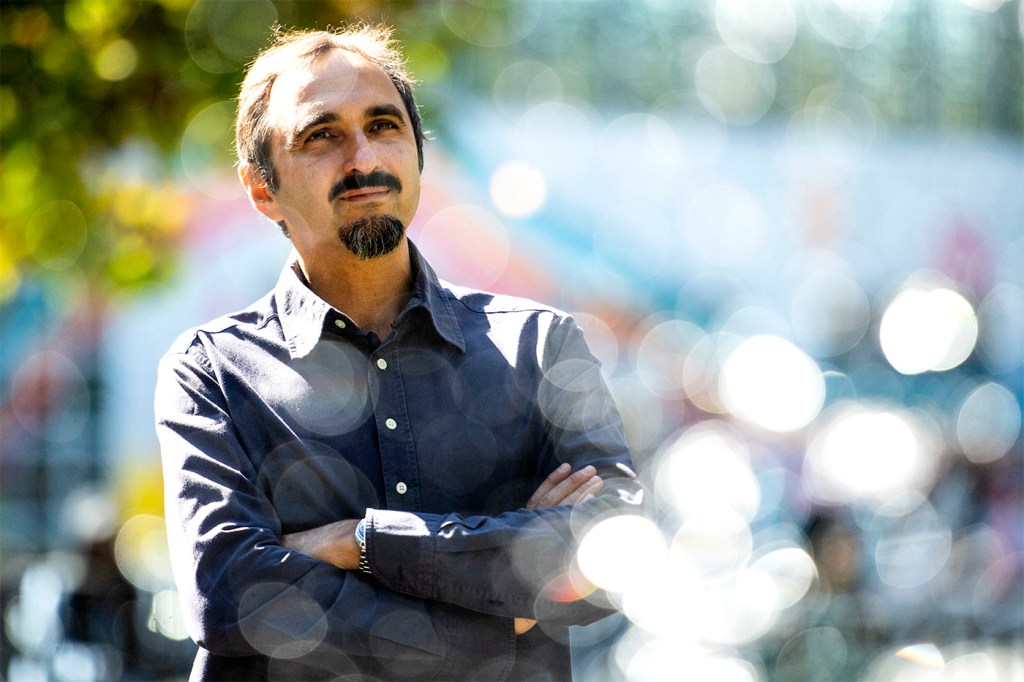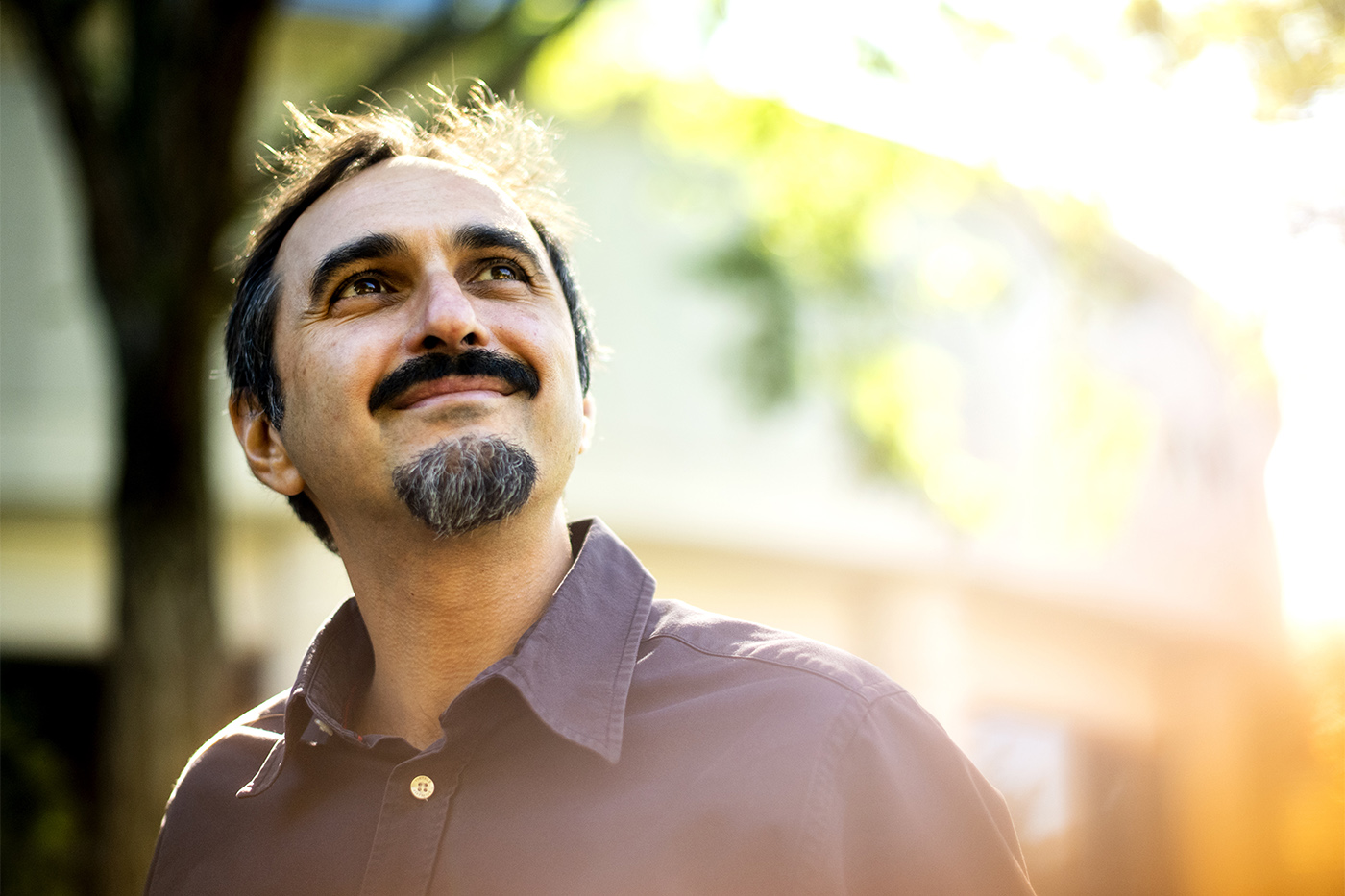At the intersection of design and data technologies, an architect takes aim at numbers

“I don’t trust numbers anymore.”
A laugh.
This is the voice of Paolo Ciuccarelli, a recently appointed professor of design and the founding director of the Center for Design at Northeastern.
“We need more context for data,” says Ciuccarelli, “and that’s where my background in architecture will help—a lot.”

Paolo Ciuccarelli is director of the Center for Design at Northeastern. Photo by Ruby Wallau/Northeastern University
The Center for Design is still mostly a vacant space, name plates signalling the eventual congregation of professors from various departments, and there’s an air of ambiguity to the fields Ciuccarelli now specializes in: information design, and its umbrella term “communication design.” But the importance of the field becomes palpable as soon as Ciuccarelli likens the presentation of information to the creation of a building.
To work as they should, both information and architectural plans should relate to the context for which they’re created, he says. Without context, they fall flat.
“Sometimes that happens in architecture—you have all these buildings that are all shaped in the same way and the same for any context,” says Ciuccarelli. “You feel it: That is not appropriate. And that’s the same with data interfaces.”
Without design that’s intended to communicate (to a particular audience, with a particular goal), information can be visually appealing but fail to trigger action, a loss for most forms of information: billboards advertising events, flyers covered in details of a lost dog, revenue graphs meant to persuade investors.
But without context, data can do more than fall on deaf ears, says Ciuccarelli—it can trigger potentially harmful misconceptions: “that a sort of phenomenon is not as big as you think it is—or it’s much bigger than you think it is,” he says.
It’s for this reason that Ciuccarelli finds himself here: in a digital, data-centric field, one full of smoke and mirrors. It’s begging for an architect’s mind.
A first step to improving this field, says Ciuccarelli, could be contextualizing data in relation to its source. The current lack of emphasis on this confounds him: Many people want to know where their food comes from, he says, “but we don’t care enough—yet—about what’s happening to this digital, immaterial level of production.”
In addition to offering further resources for someone to learn more, contextualizing data can also incentivize someone to pay attention to it in the first place.
“Pollution, climate change—some people just don’t care,” Ciuccarelli says. “I try to make students think of data representation, data transformation, more as a process and less as a product. It’s a discourse that you start. It’s a dialogue.”
Most recently, Ciuccarelli led the Communication Design program at Politecnico di Milano in Italy, where he worked for 20 years, across disciplines, engaging in dialogue all the while. And his efforts haven’t gone unnoticed.
“For 20 years, he’s been at the forefront internationally of creating new approaches and forms of design and communication that change the way we understand information and its impacts,” says Elizabeth Hudson, dean of the College of Arts, Media and Design. “We are incredibly excited to have him leading the new Center for Design.”
But while he is what Hudson calls “a leading voice at the intersection of design and data,” Ciuccarelli hasn’t travelled on a straight path to that intersection.
“When I started my career as a student, there was no university program in design in Italy,” he says. He consequently chose to study architecture, moving next to product design, then to communication design, and ultimately to information design.
He’s come a long way from architecture. He agrees. But, he adds, “now I’m going back.”
For media inquiries, please contact Mike Woeste at m.woeste@northeastern.edu or 617-373-5718.





